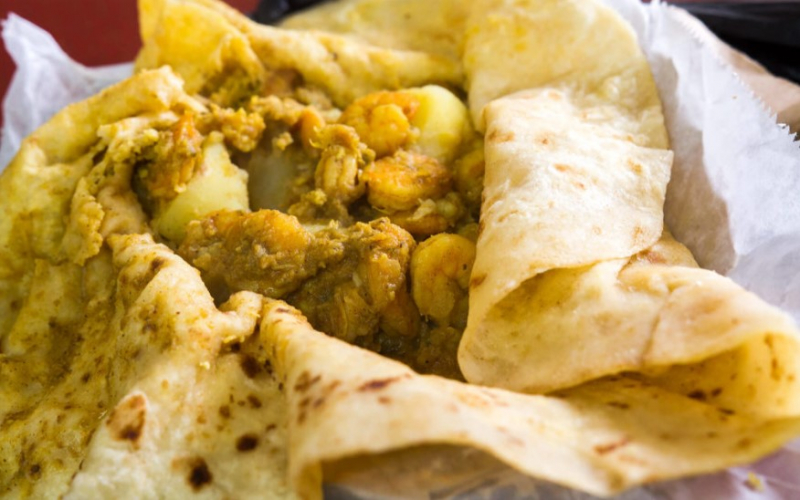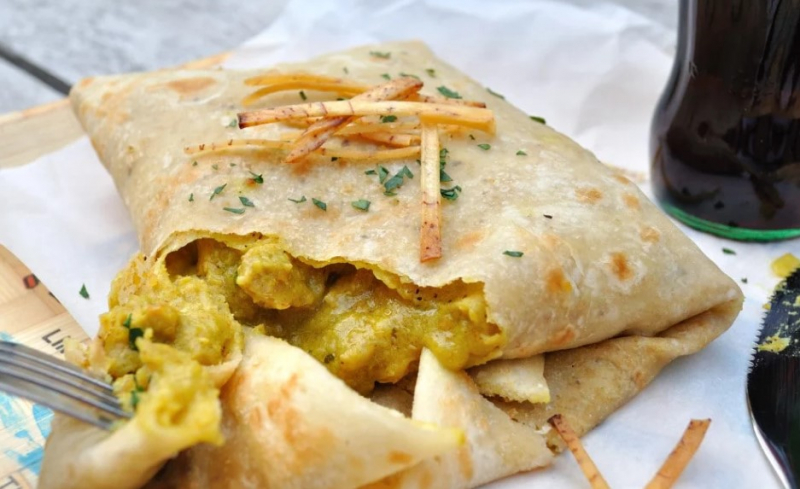Roti
Roti is one of the most popular Trinidadian street foods, is a popular Trinidadian dish that has its roots in Indian cuisine. It is a type of flatbread that is enjoyed both as a standalone food item and as a vessel for various fillings. Roti is a staple in Trinidad and Tobago, and it is commonly consumed for breakfast, lunch, or dinner.
Trinidadian roti is typically made from a dough consisting of flour, water, salt, and sometimes oil or ghee (clarified butter). The dough is kneaded until smooth and elastic, and then it is rolled out into thin, circular shapes. The roti is then cooked on a tawa, a flat griddle, until it puffs up and develops golden brown spots.
There are different types of roti in Trinidad and Tobago, each with its unique characteristics. Dhalpuri roti is a popular variety filled with a flavorful mixture of ground split peas (dhal) and spices. Paratha roti is layered and flaky, created by repeatedly folding and rolling out the dough with oil or ghee. Sada roti, on the other hand, is a plain, unleavened roti made with flour, water, and salt.
Roti is commonly served with a variety of fillings and accompaniments, such as curried meats, vegetables, or channa (curried chickpeas). It is also a common practice to tear off a piece of roti and use it to scoop up the accompanying dish, creating a delicious and satisfying meal.












